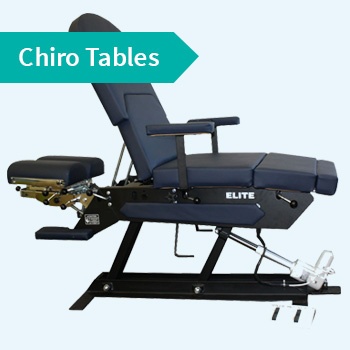
Why are you leaving it up to patients to make the decisions?
YOU (and your team) ARE THE PROFESSIONALS.
That’s why they have sought out your healthcare services in the first place, because they need a professional opinion, they need professional advice, and they want guidance and direction from you and your team.
This is one of the main reasons clinic owners struggle with patient engagement and achieving successful outcomes.
As a registered physical therapist of more than 18 years I understand that we are ‘ethical’ based practitioners. We’re in the caring business. So being a highly professional trusted health advisor and making strong recommendations can make many therapists feel pushy.
But I can tell you this is not what patients think.
I own AlbertaPT, which has 6 locations in Calgary. We run a multidisciplinary clinic that includes physiotherapists, kinesiologists, massage therapists, and we work with physicians.
As physiotherapists, chiropractors, and massage therapists, we need to engage the person in a treatment plan at the very first visit. And really, patient satisfaction and retention isn’t all that complicated.
So let’s talk about 10 patient engagement strategies you can implement tomorrow at your practice.
How To Solve Patient Engagement With These 10 Smart Tips
1) Make your patients feel important.
People are always thinking about themselves, so as a physiotherapist or chiropractor your focus has to be ALL about them. At the very minimal you have to act like you are glad to see them and have time for them, no matter how busy or stressed you may be.
In today’s modern world people get treated like a number all too often. So they can be really impressed by getting a little more attention.
2) Make the patient feel you remember them.
A great way to amplify their feeling of importance is to ask your patients something specific and personal.
If they are a first time patient and they mention something about their work, kids, or family, you could extend the conversation by asking a simple question like - “how many kids do you have?”
If they are a returning patient, ask them something you may remember from their last visit. Here’s a tip - during consultations, if a patient mentions their children’s names or something personal, write it on the last page on their SOAP notes. Then you’ll be able to surprise them with your amazing memory.
3) Listen to the patient.
Ask your patients how they have been and what brings them in. Listen to what they say and reflect the problem back at them so they know they have been heard. Listening and reflecting helps build a deep level of understanding.
4) Connect with the patient.
Ask deeper questions about the patient’s ideas as to the cause of their issue. Can they remember what brought on the situation? Explain that the more detail you have, the more thorough you can be in your assessment and treatment.
Then discuss the potential solutions you can offer. Talk about the possible length of time needed for treatment, what you might do, and how you can work together to achieve what they want.
5) Make a patient plan on how to achieve their functional goals
Practitioners often worry about their client's wallets, and you shouldn’t.
Patients usually don’t mind how much they have to spend. After all, they want to get better.
BUT what they don’t want is to waste their money. All they want to know is that their money is going to produce a result.
So it’s very important to make a treatment plan, discuss both yours and their involvement in it, and how it is going to help them achieve their goals. Give them a timeline and make it clear and then you’re never going to have any issues.
6) Don’t interrupt the patient.
It sounds simple enough but it happens all the time in health care, people don’t really pay attention. They speak over the person or interrupt them and it’s quite disrespectful.
Make eye contact, smile, be attentive, and listen as we already pointed out above.
7) Present the benefits to the patient.
Remember you are the professional, and patients have come to you for help. They don’t really know or understand what they need, so it’s up to you to explain it.
Let them know how a test, treatment, and/or ankle brace will assist them in achieving their goals. That way they can be actively engaged in the treatment process. It helps them be more committed at every stage of the way and opens up communication channels for when things may not be working.
8) Be a aware of patient non-verbal communication
Look out for non-verbal cues from your patients such as sighing, being bored, sad, stressed, etc.
Don’t ignore these cues. Instead, communicate with your patients by asking them why they are feeling frustrated? What’s bothering them?
When we can be open and listen, it helps us deliver better service and help the patient in a way they really need.
9) Express support and empathy to the patient
If you can do all of the above, then you’ll already be fully supporting your patients. Empathy is the ability to walk in the other person’s shoes. Share and understand their experience.
So by listening, asking, engaging, and communicating you are expressing empathy. This is important because empathy helps build confidence and trust.
10) Present treatment options and not just one option.
When you’re mapping out your patient’s treatment plan, make it an active process - engage them in different options. This makes them responsible too, instead of leaving it all up to you.
You may be a great therapist but you’re not a magician, so you also need to educate your patients on self-care, how they are going to be involved in holding up their side of the bargain. And making sure they have the right equipment and therapy products to successfully accomplish their self-treatment routine.
If you put all of those things together, what it really boils down to is something that the counselling and psychology field calls ‘a person centered approach’ - all the experts use this simple marketing approach because it works!
As you can see by all of the above 10 solutions, it’s ALL about putting the patient first. That’s what retains them, because they know you truly care. And it’s also what brings successful outcomes, because they trust that what you do together will work.
Give it a try yourself and let us know how it goes. I bet you’ll notice your patient retention and satisfaction will change instantly!
Related Articles
Why Do Patients Self Discharge From Treatment and What To Do About It?
How to Measure Patient Satisfaction and Boost Your Referrals
How to Boost Patient Compliance that Drives Repeat Visits
Supercharge Your Patient Retention with PVA
Clinic Owner Interview Series: #4 Darin Cohen - Why I decided to have business partners
Related Products To This Article











